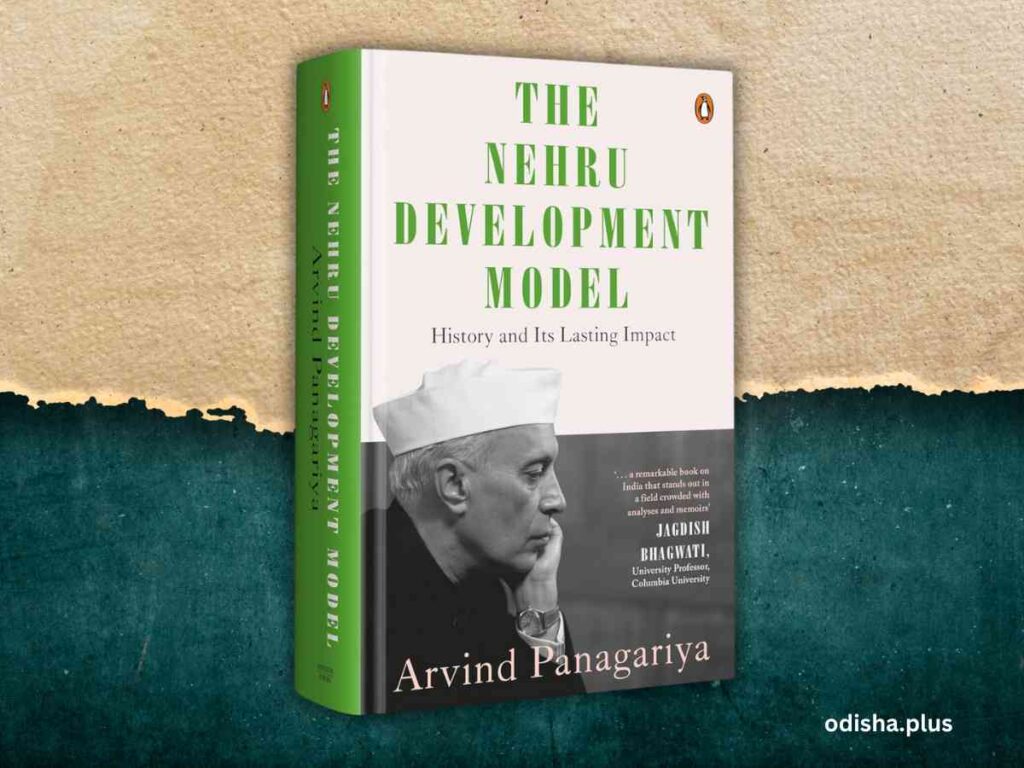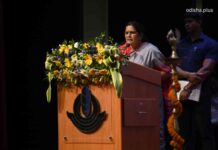In ‘The Nehru Development Model,’ Arvind Panagariya analyzes India’s economic history during the Nehru era and its lasting impact on post-Nehru economic policies
Prof. Satya Narayan Misra

The Nehru Development Model: History and Its Lasting Impact
Arvind Panagariya
Penguin Viking
Gurugram
Dr S Gopal wrote a three-part biography of Nehru in 1975, considered a most balanced, authoritative, and comprehensive account of Nehru’s life. Nehru embarked upon two foundational projects; one a political project, consisting of his firm conviction of a democratic constitution, and the other an economic project, based on the development of heavy industry, and reliance on the public sector, as ‘temples of modern India’.
Seventy years after independence, India stands not only as the world’s largest democracy but as its most stable and vibrant one, trumping the world’s oldest democracy, the USA. Despite all his good intentions, his economic project has not only failed to produce the growth necessary to rid India of ‘appalling poverty’ but also bequeathed an ethos that has made a switch from the entrenched socialist thought a real challenge to surmount.
Arvind Panagaiya in his latest book ‘The Nehru Development Model’ has tried to document systematically the economic history of the Nehru era, contemporary economic thought flowing out of economic liberalization sown in the 1990s, and their impact on the post-Nehru political economy of policy-making.
Criticizing Nehru
Nehru bashing is a cottage industry, where Jagadish Bhagawati, the globally well-known trade economist, made a pioneering study in 1970 along with Padma Desai of the economic system as it existed in the 1960s. And how it hamstrung India from becoming a global economic power, sans free market and free trade.
In 2012, Bhagawati with his protégé Panagariya wrote an eminently readable book titled ‘India’s Tryst with Destiny’ where they showed how contrary to many myths spawned by left-leaning economists, economic reforms have accelerated economic growth, reduced poverty, and improved the welfare of socially disadvantaged groups.
Bhagawati believes that the politics of democracy and economics of poverty alleviation which Nehru underlined in his iconic Tryst with Destiny speech at the stroke of Midnight have found their true fruition after economic liberalization. The very fact that 25 crore people have moved out of multi-dimensional poverty from 2013-14 to 2022-23, from 29% to 11%, as per the Niti Aayog Report (2024) would have possibly both gladdened and befuddled Nehru, the Fabian Socialist!
Panagariya’s research shows that contrary to the common belief that Nehru became a convert to Fabian socialism while studying at Cambridge and Inner Temple London, it was his visit to Soviet Union in the late 1920s that his ideas on socialism firmed up. Nehru‘s embrace of socialism was anchored in the belief that imperialism was the direct result of capitalism. He saw growth as the principal instrument to eradicate India’s appalling poverty and self-sufficiency as the panacea to avoid becoming a victim of imperialism.
The second objective led him to place the development of heavy industry on the front burner. An important goal of socialism is to minimize inequality of income and wealth. The public sector provided an avenue to promote this goal. The cottage industries were to be the primary source of employment for the masses as the heavy industry would not create adequate opportunity for India’s large unemployed workforce.
Mahalnobis Model
It was PC Mahalnobis who could translate Nehru’s ideas into a model. The Mahalnobis Model published in 1953 in Sankhya was a close cousin of the model earlier developed by Grigory Feldman who had worked with the Soviet planning agency Gosplan from 1923 to 1931. Taking a closed economy model, Mahalnobis envisaged a two-sector economy that can produce a consumed good and investment good. The planner’s problem is determining the allocation of the investment each year between consumption and investment goods.
In the draft plan frame of the Second Plan, Mahalnobis used a four-sector extension of his two-sector model with investment goods such as machinery and steel, factory-produced consumer goods such as automobiles and scooters, small household goods such as clothing and agricultural commodities representing the four sectors.
Mahalnobis fully shared Nehru’s enthusiasm for assigning the public sector the key role in the development of heavy industries. The major dissents to the draft plan were Shenoy, an acolyte of Hayek, who attacked the large deficit proposed to finance the ambitious plan, and Vakil and Brahmananda, of the Bombay School, who advocated a greater focus on agriculture and limiting heavy industry to agricultural machinery.
Milton Friedman
But it was Milton Friedman, the high priest of market fundamentalism, who during a visit to India in 1955 criticized the combination of heavy industry and handicraft threatening efficient use of capital. For Panagariya, this observation of Friedman has proved to be prescient and prophetic ‘and more pragmatic than the Feldman-Mahalnobis model.
Panagaiya turns his attention to the dark era of import policy which believed in protection and import substitution. India’s comparative advantage lies in light manufactures. Since the government chose to relegate their production to cottage industries that lacked the necessary capital and skills to produce quality goods at an efficient scale, they made very little headway in the export market. They left primary products such as tea and jute-based items as India’s main exports.
For Panagariya, it was the decision to develop heavy industry upfront coupled with a fixed exchange regime rather than socialism or planning per se that necessitated the establishment of the vast bureaucratic regime characterized by investment licensing, autarkic import policy, price and distribution controls.
The most detrimental effect of the heavy industry-centered approach to industrialization was the exclusion of the vast majority of the population from the development process. These views were also corroborated by Ashoka Mody, the economic historian in his scathing indictment of Nehru in his book India is Broken (2023).
Though the economic reforms of 1991 reset the course of economic policy, Panagariya believes that the legacy effects of socialism persist in the bureaucracy, laws, and judiciary. Socialist-era laws have remained a challenge to the transition to a market economy. This is particularly true in the area of labor.
Left Ideology
In 2019 & 2020, the Modi government enacted four labor codes intended to replace more than 24 existing labor laws. With the socialism of yesterday still looming large in the Ministry of Labor, they have not yet been implemented even five years after the Parliament enacted them! Panagariya also believes that it remains a challenge to find economists who are passionate advocates of pro-market reforms as most educators subscribe to the left ideology.
Be that as it may, the Nehru bashing project would need to be seen not merely from the perspective of high-octane growth that India has achieved post-1991 but from the holistic constitutional expectation of achieving socio-economic justice for all, which was an equally passionate project of Nehru, apart from democracy. Land reforms and the abolition of zamindari were pet projects to obliterate the vestiges of economic imperialism, which had the passionate support of apostles of capitalism in free India.
As Isiah Berlin put it “Freedom for the wolves means death to the lambs”, signifying absolute economic freedom for the powerful capitalists can result in the oppression and exploitation of the vulnerable. Both Nehru and Indira were aware of this and distributive justice, and welfare rather than profit alone guided their economic policy.
Panagariya fails to bring up the alternative development model suggested by Prof Amartya Sen which is known as the ‘capability approach’, focusing on human capabilities and freedom rather than just economic growth. Commenting on India’s economic liberalization Prof Sen observes that “Economic liberalization could have been far more productive if social facilities were there to support the economic opportunity for all sections of the society.”
A comparison of the Bhagawati free market Model based on which Gujarat’s growth story is predicated and the Kerala Model based on Sen’s capability, one finds how Kerala scores 0.958 on a scale of 1 compared to Gujarat which scores 0.484 out of 1 in Child Development Index. The CDI is brought out by Save the Children, an international organization based on three key dimensions: health, education, and nutrition. While Kerala scores 97.4 in women’s literacy, 6 IMR (100), 30 MMR (1 lakh), GER of 97, and 23.4% under untreated, the comparable figures in Gujarat are 73.5, 23, 70, 77 and 39.
Panagariya disdains an entitlement-based society like the Right to Education where every Indian has a right to education, but favors education vouchers for the poor, as manna from the market. Instead of fixing public delivery of merit goods like quality primary schooling, assured health care, and basic nutrition by allocating more funds to the social sector, the blind propitiation of the corporate sector and dismantling all regulation by market fundamentalists like Panagariya and Bhagawati is responsible for the widening income inequality that one notices in India and the scant concern to improve employability of India, shorn of quality schooling and skilling.
Crony Capitalism
One of the first recommendations of Bhagawati & Panagariya, when Modi came to power was to whittle down the scope of MNREGA, which provides livelihood to 13.42 crore unskilled workers in the rural backyard of India. Modi, the astute politician did not bite the advice, as he was aware of its negative fallouts.
The market economics of Panagariya and his demonization of Nehru is not only bad economics but an affront to Nehruvian fidelity to constitutional morality, and the arc of distributive justice. Efficiency and equity must walk in hand to harness shared prosperity as rightly advocated by the Nobel Laureate Joseph Stiglitz, in a world besieged by crony capitalists.
(The author is a Professor Emeritus, KIIT University, Bhubaneswar. Views expressed are personal.)

























